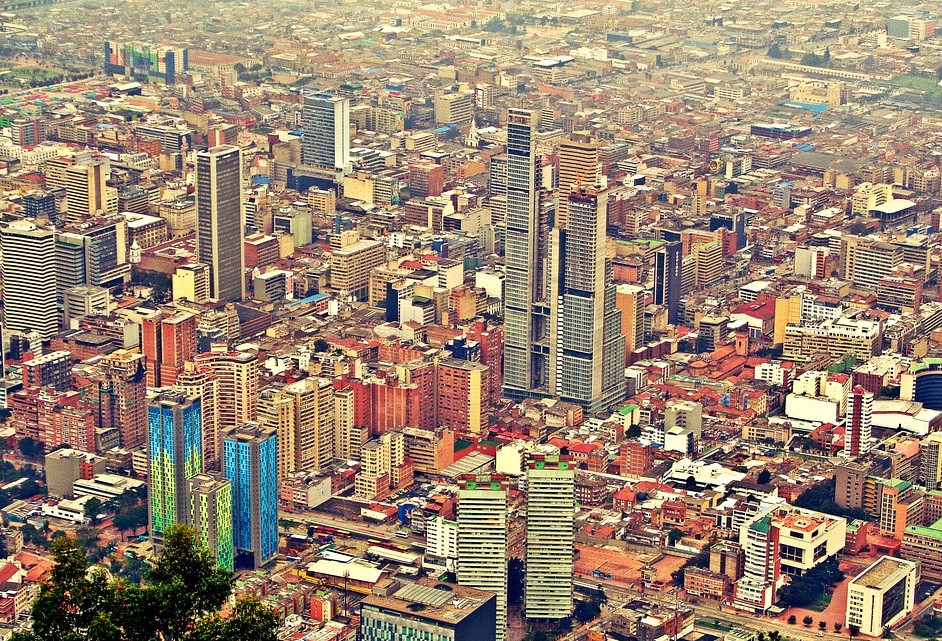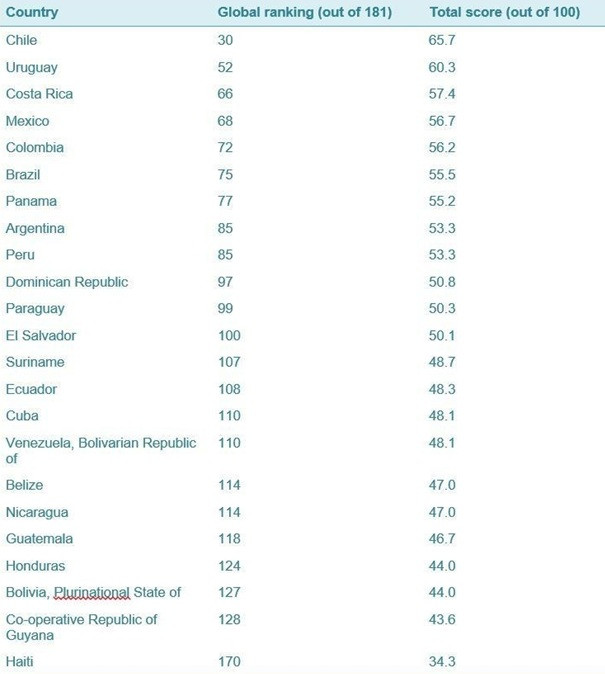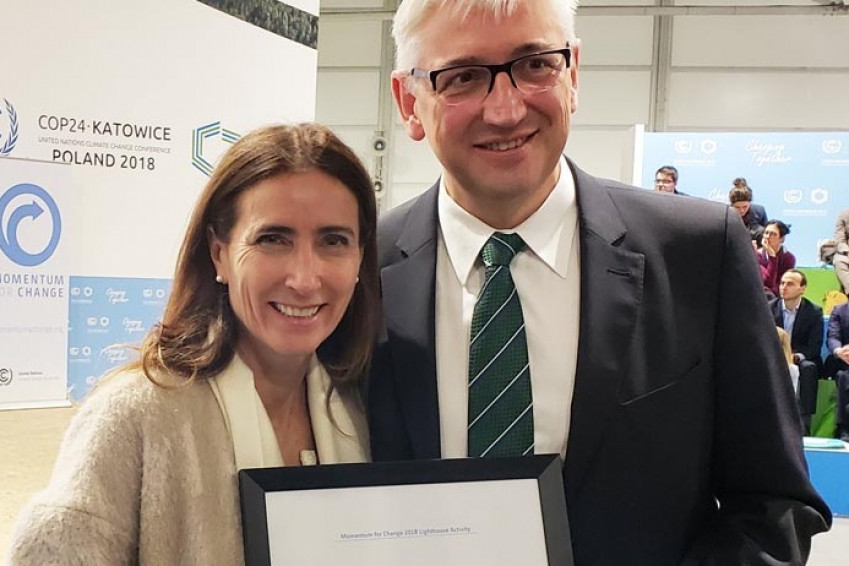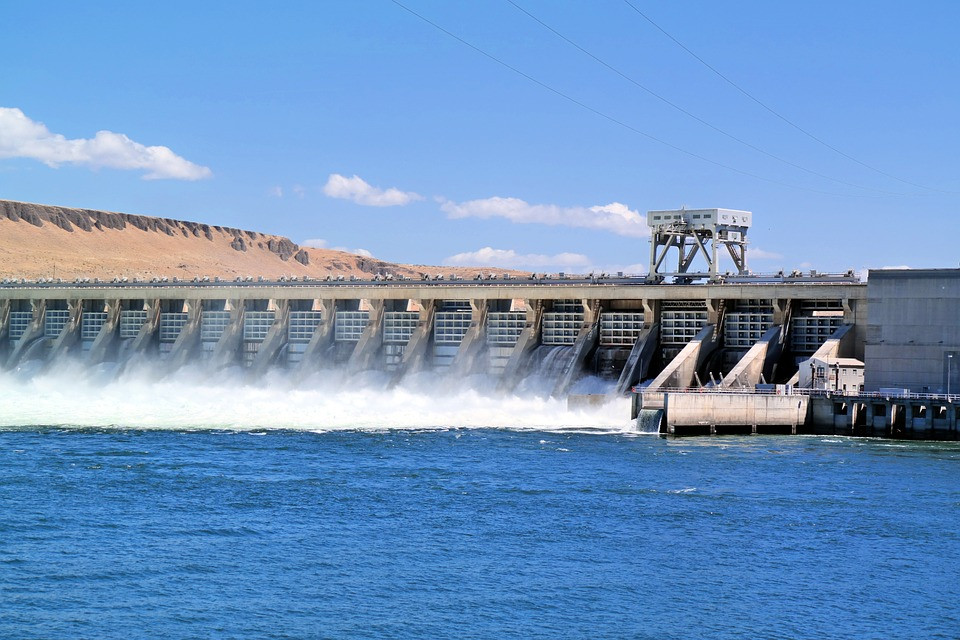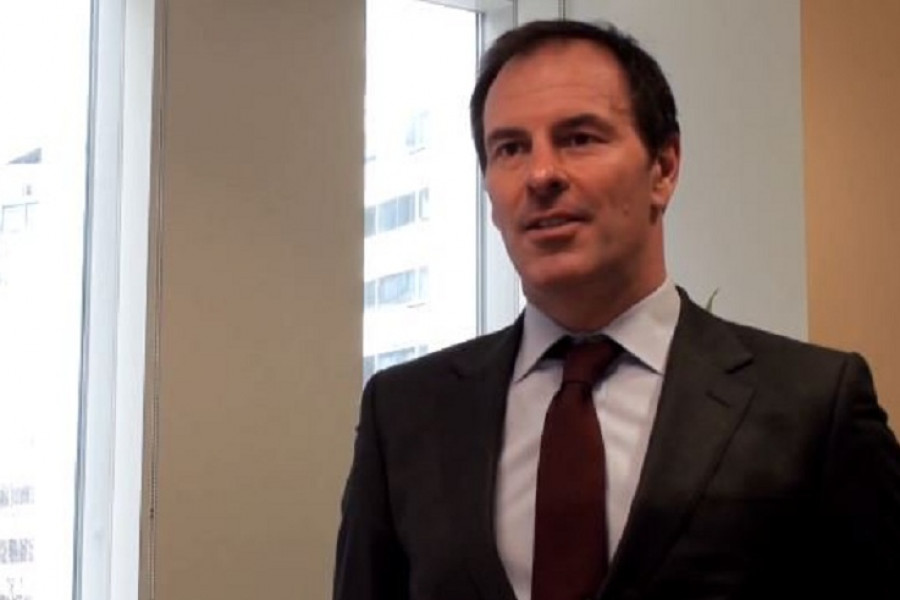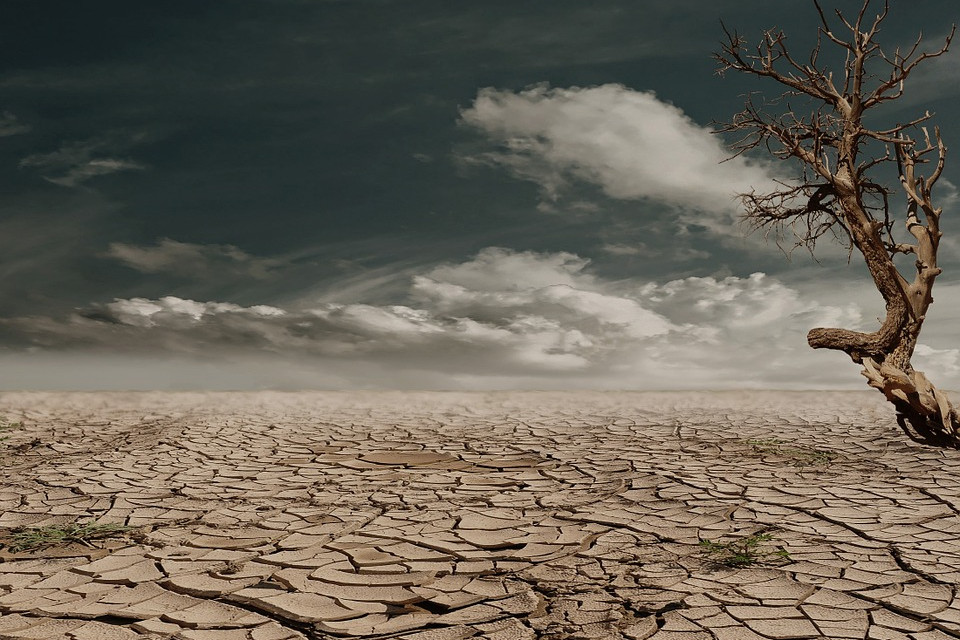The reduction of global greenhouse gas emissions is essential to be able to manage the risks of climate change throughout the world. However, even if we succeed in limiting global warming to 2°C, the climate will continue to change, affecting both businesses and communities in Latin America.
Often, the 2°C target for global warming is not properly understood. There is a tendency to think that it is a scientific limit that perfectly delimits the "safe" and "dangerous" levels of climate change. However, it is not like that.
Rather, it is a line drawn by politicians in 2010 in a pragmatic attempt to achieve a balance that avoids the most severe climatic changes associated with higher levels of warming, while recognizing that maintaining global warming at less than 2°C would politically be almost impossible.
Nevertheless, let's not get confused - global warming of 2°C will in any case seriously affect businesses and communities. Some scientists, particularly James Hansen of NASA, warn that even 2°C of warming would be disastrous, causing the same "repercussions" as much higher levels of warming.
Several of the world's most vulnerable countries highlighted this point at the UN conference on climate change held in Paris in December 2015. As a result, the Paris Agreement included the much more ambitious goal of limiting warming to "well below 2°C", with a target of 1.5°C.
How do the impacts of 1.5ºC compare with 2ºC of warming?
The problem is that the world has already warmed 1.1°C above the levels prior to industrialization. Moreover, a UN Environmental Analysis shows that, even if all countries fulfil this commitment they have made to reduce emissions as part of the Paris Agreement, the world will continue to warm up somewhere between 3°C and 3.2°C.
The good news is that there are considerable opportunities for low-carbon investments that build resilience and reduce emissions.
The International Finance Corporation estimates that in Latin America this market will be worth more than 600 thousand million dollars over the next 14 years.
This shows that the transition to a clean economy is aligned with the creation of a safe and bright economy that will allow governments to set their sights higher and adopt future temperature goals that approach the goal of 2°C or lower.
While we need to rapidly accelerate efforts to reduce greenhouse gas emissions, we have to also think seriously about improving our climate resilience. These are different sides of the same coin.
Regardless of political alliances or opinions about what causes climate change, most people agree that it is actually happening. Preparing for its impact on communities and businesses should be a central part of all countries' economic plan.
What capacity for climate resilience does Latin America have?
Climate resilience is extremely difficult to measure consistently. One method, used by the University of Notre Dame, measures the vulnerability of countries to climate change and their levels of preparedness. It uses 45 different indicators to measure vulnerability in categories such as food systems, water availability,
infrastructure and health, in addition to its economy, governance and social preparation. Together, they give an indication of the overall climate resilience of countries.
This is how Latin American countries compare:
How can climate resilience be improved?
All legislators and business leaders have a responsibility to take climate resilience seriously, and their voters and shareholders should force them to fulfil this responsibility.
The first priority is to increase understanding of the variety of changes that are expected in a country or region, and make a cross-reference to its industries, human settlements and infrastructure.
In many countries, climate change is a "known stranger," This is, decision-makers know what is happening, but they don't know exactly how fast or serious the changes are. This is why climate scientists talk about "paths," "scenarios," "ranges," and "probabilities". The variables are complex and influenced by local and regional factors. This makes local research fundamental.
While the specific priorities to improve climate resilience will be different in each country, there are three types of actions that no country can ignore to improve.
1. Incorporate climate resilience into infrastructure standards
Much of the infrastructure in the world is built using methods that are several decades old. This needs an update. Consider the amount of infrastructure that is expected to be built in Latin America in the next four years. The United Nations Economic Commission for Latin America and the Caribbean recommended that the region invest 6.2% of its GDP in infrastructure, around 320 thousand million dollars per year, until 2020. If it is not designed and built to resist climate change, the chances are that it will eventually have to be rebuilt, diverting funds from other development priorities such as health and education.
In cases where the additional initial cost is too high to build the infrastructure to better standards from the outset, climate resilience can still be incorporated into the design specifications. An intelligent design should allow modular or staggered construction methods that keep the initial costs down, but allow it to be underpinned or enlarged as conditions change throughout the life of the infrastructure.
2. Reduce structural vulnerabilities
In 2016, the risk rating agency Moody's issued a guide on how climate change could affect the ability of states to repay their debts, stating that "while all countries will experience the physical effects of climate change to some extent, the largest, with more diverse economies and geographies, will be less vulnerable".
Diversification has to be a priority for countries whose income comes from sectors strongly exposed to climate change (for example, agriculture), or that depend on a single main transport infrastructure (for example, ports/railway lines), or that have large populations in places exposed to the weather.
In some cases, the solution is to duplicate the construction: for example, alternative output chains, secondary capacity and backup plans in case of interruption of energy, water or transport infrastructure. Given that many companies are also trying to manage vulnerabilities in their global output chains, there may be opportunities for them to invest together with governments to improve climate resilience in critical locations.
3. Explore innovative financing models
Financing the additional initial costs of a more resilient infrastructure is a challenge, but new "mixed" financing models could help. For example, multilateral development banks (MDBs) are exploring the exchange of loans to increase investments in their particular region without increasing the overall risk profile of their loan portfolio.
With the appropriate framework, insurers may also be able to offer reductions in premiums for infrastructure with climate resilience.
The savings could be used to pay off loans from an MDB that financed the additional initial costs.
Climate changes could have an impact on sustainable development plans and affect the quality of life of people in different ways, from food and energy security, sanitation and health, to employment conditions and availability, mobility and values of properties. Improving resilience can help reduce these impacts.



